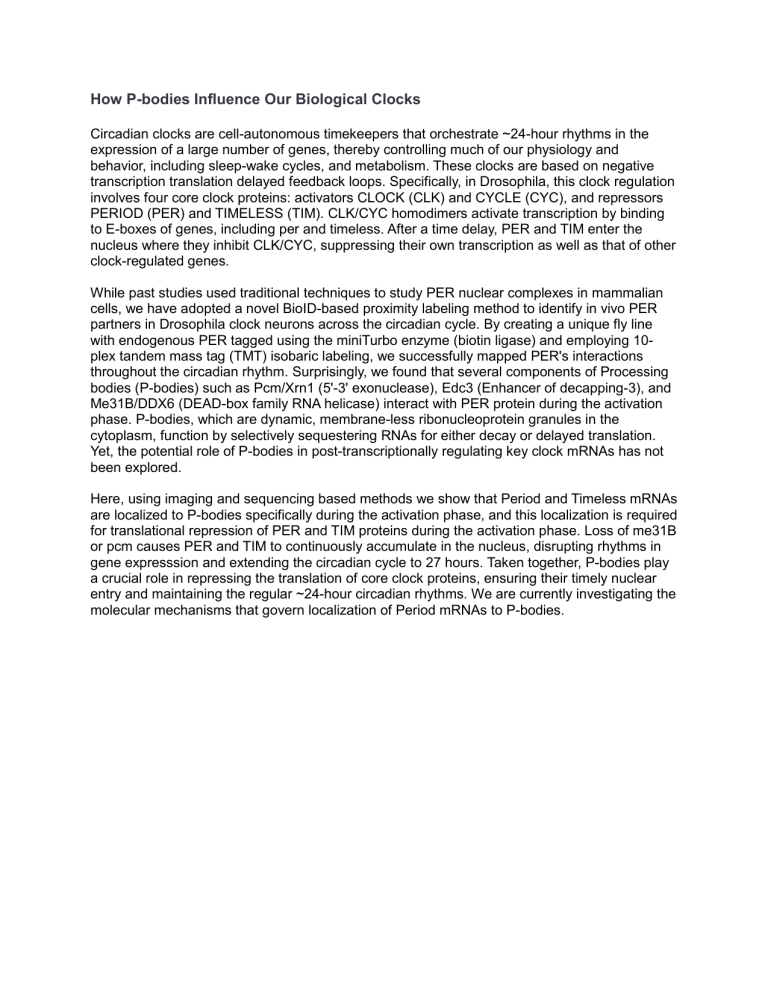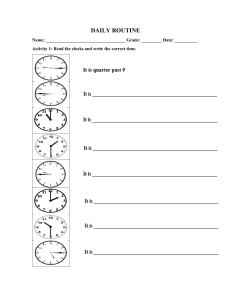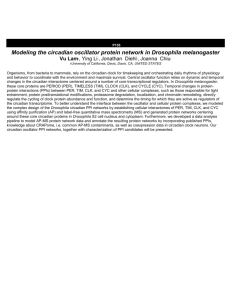
How P-bodies Influence Our Biological Clocks Circadian clocks are cell-autonomous timekeepers that orchestrate ~24-hour rhythms in the expression of a large number of genes, thereby controlling much of our physiology and behavior, including sleep-wake cycles, and metabolism. These clocks are based on negative transcription translation delayed feedback loops. Specifically, in Drosophila, this clock regulation involves four core clock proteins: activators CLOCK (CLK) and CYCLE (CYC), and repressors PERIOD (PER) and TIMELESS (TIM). CLK/CYC homodimers activate transcription by binding to E-boxes of genes, including per and timeless. After a time delay, PER and TIM enter the nucleus where they inhibit CLK/CYC, suppressing their own transcription as well as that of other clock-regulated genes. While past studies used traditional techniques to study PER nuclear complexes in mammalian cells, we have adopted a novel BioID-based proximity labeling method to identify in vivo PER partners in Drosophila clock neurons across the circadian cycle. By creating a unique fly line with endogenous PER tagged using the miniTurbo enzyme (biotin ligase) and employing 10plex tandem mass tag (TMT) isobaric labeling, we successfully mapped PER's interactions throughout the circadian rhythm. Surprisingly, we found that several components of Processing bodies (P-bodies) such as Pcm/Xrn1 (5'-3' exonuclease), Edc3 (Enhancer of decapping-3), and Me31B/DDX6 (DEAD-box family RNA helicase) interact with PER protein during the activation phase. P-bodies, which are dynamic, membrane-less ribonucleoprotein granules in the cytoplasm, function by selectively sequestering RNAs for either decay or delayed translation. Yet, the potential role of P-bodies in post-transcriptionally regulating key clock mRNAs has not been explored. Here, using imaging and sequencing based methods we show that Period and Timeless mRNAs are localized to P-bodies specifically during the activation phase, and this localization is required for translational repression of PER and TIM proteins during the activation phase. Loss of me31B or pcm causes PER and TIM to continuously accumulate in the nucleus, disrupting rhythms in gene expresssion and extending the circadian cycle to 27 hours. Taken together, P-bodies play a crucial role in repressing the translation of core clock proteins, ensuring their timely nuclear entry and maintaining the regular ~24-hour circadian rhythms. We are currently investigating the molecular mechanisms that govern localization of Period mRNAs to P-bodies.





